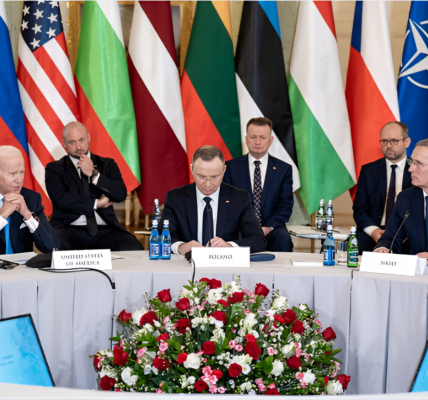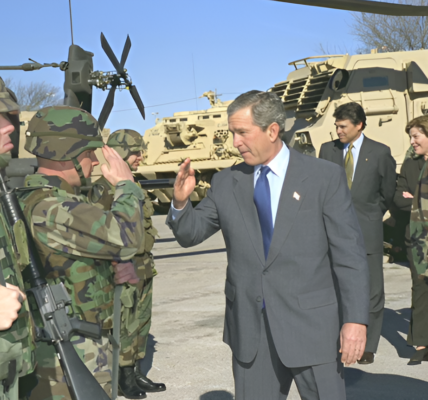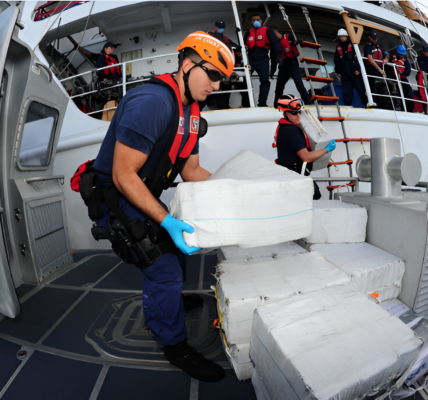
Six months into the Korean War, Life magazine ran an article titled “What Mobilization?” In it, the publication criticized the United States’ industrial preparedness, highlighting the lack of essential military equipment, like tanks, which wouldn’t be ready until the following year. The article struck a chord in the public’s consciousness, but within days, President Harry S. Truman began utilizing the powers granted to him under the Defense Production Act (DPA), spurring an economic mobilization effort aimed at supporting the war effort.
However, this mobilization was not a complete takeover of the economy. Truman’s approach was more measured, opting to work with the private sector to scale up production of essential military equipment, while avoiding drastic disruption to the consumer economy. This approach mirrors, surprisingly, how the U.S. has mobilized its economy during the COVID-19 pandemic — and in many ways, the lessons learned from the Korean War provide valuable insights for addressing the current crisis.
The Mobilization Strategy of the Korean War
When North Korean forces invaded South Korea in June 1950, the immediate response was one of limited mobilization. Key economic figures, like W. Stuart Symington, the head of the National Security Resources Board, pushed for large-scale mobilization. However, Truman dismissed this approach, emphasizing wage and price controls without the need for a total economic overhaul.
This decision came despite early military setbacks and the establishment of the National Security Resources Board in 1947, intended to guide the U.S. economy during wartime. But the board was largely ineffective and lacking in resources. By July 1950, the situation had worsened, prompting Truman to ask Congress for increased military spending, tax raises, and new powers to regulate defense production and manage the civilian economy.
The Defense Production Act granted Truman significant control over key sectors, allowing him to prioritize resources and materials, make defense loans, and impose wage and price controls. While the powers granted by the DPA were not as broad as those available during World War II, they were still significant in allowing the U.S. government to intervene in the economy during an undeclared war.
Despite this newfound authority, Truman was cautious not to disrupt the consumer economy too much. His goal was to expand production without decimating the civilian sector. By 1951, the U.S. was producing cars, refrigerators, and televisions in addition to weapons, illustrating the balance Truman sought to strike. This careful intervention contrasts with the approach of World War II, when full mobilization essentially halted consumer production in favor of war-related manufacturing.
Lessons from the Korean War for the COVID-19 Response
While World War II’s full-scale mobilization serves as the model for much of the nation’s economic wartime strategies, the mobilization of the Korean War presents a more relevant comparison for the COVID-19 pandemic.
- Gradual Mobilization: Unlike the immediate national transformation seen during World War II, the Korean War mobilization was gradual and pragmatic. The same is true for the pandemic response. While President Trump invoked the DPA early in the crisis, real action—such as forcing companies like General Motors to produce ventilators—took weeks. The key takeaway here is that mobilizing for a national crisis takes time. Companies simply cannot switch production lines overnight, particularly when crucial raw materials, such as personal protective equipment (PPE), are in limited supply.
- Cooperation with the Private Sector: Truman’s approach was to collaborate with industry rather than attempt to seize full control. Similarly, the Trump administration has focused on working with private companies to ramp up production of medical supplies, choosing not to impose widespread mandates. This approach, while ensuring some flexibility, has led to issues with coordination. States have found themselves competing against each other for critical resources, a situation that could have been mitigated with greater federal oversight—much like the Controlled Materials Plan introduced during the Korean War.
- Supply Chain and Resource Allocation: As in the 1950s, global supply chains are now a critical bottleneck. Companies like 3M and Philips are scrambling to secure the raw materials necessary to produce masks, ventilators, and other supplies. The U.S. government has also faced difficulties managing these scarce resources, much as the Truman administration did during the Korean War, when shortages of materials like copper and nickel slowed production. The Korean War eventually saw the expansion of the Controlled Materials Plan to ensure equitable distribution of essential materials. The same model could help manage resources in future crises.
Preparing for the Next Pandemic
The mobilization lessons from the Korean War offer critical insights into preparing for future global pandemics. The U.S. needs to focus on building long-term infrastructure, including:
- A national stockpile of medical equipment and supplies that is regularly updated.
- Expanded diagnostic capabilities to detect outbreaks quickly.
- Production conversion plans that enable rapid shifts in manufacturing.
- Self-sufficiency in key materials, reducing dependence on international supply chains during emergencies.
As the Korean War demonstrated, mobilization efforts can lay the foundation for future challenges. Just as the Korean mobilization helped prepare the U.S. industrial base for the Cold War, the current crisis should be used as an opportunity to fortify the nation’s capacity to respond to future health crises, ensuring that the necessary equipment and resources are always available.
In conclusion, while the World War II model of total economic mobilization was appropriate for the scale of that global conflict, the Korean War’s limited mobilization strategy offers a more appropriate model for the current pandemic. This approach balances national security and economic stability, ensuring that necessary materials and resources are produced without overwhelming or halting civilian industries. By learning from both the successes and shortcomings of past mobilizations, the U.S. can ensure it is better prepared for whatever crises lie ahead.



